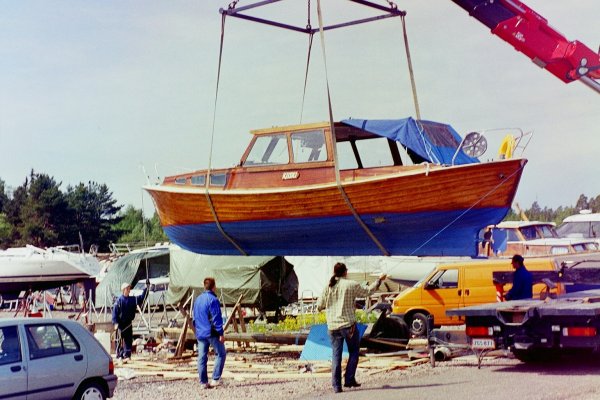Any hull can be made to exceed "hull speed" with enough power, however if the height of the bow or stern wave exceeds freeboard first, then it will sink first. The 1.34 x WL ^ .5 formula is just speed of the wave with a length = WL. Assumption is once the wave is as long as the waterline it swallows the boat.
The lift/drag ratio of the hull form is really the determining factor. Planing boats develop enough lift to ride on top of their bow wave, leaving the stern wave behind. Many racing sailboats plane readily, even though they are soft bilged and do not have an immersed stern. Very narrow hulls like catamarans have U shaped or even completely round sections, and readily exceed "hull speed". These narrow hulls also have better lift/drag ratios than traditional displacement hull shapes.
The distinction is really not amenable to a simple definition. For ordinary trawler type yachts, hard chine vs. soft bilge or different sterns are characteristic, but not determining.
The lift/drag ratio of the hull form is really the determining factor. Planing boats develop enough lift to ride on top of their bow wave, leaving the stern wave behind. Many racing sailboats plane readily, even though they are soft bilged and do not have an immersed stern. Very narrow hulls like catamarans have U shaped or even completely round sections, and readily exceed "hull speed". These narrow hulls also have better lift/drag ratios than traditional displacement hull shapes.
The distinction is really not amenable to a simple definition. For ordinary trawler type yachts, hard chine vs. soft bilge or different sterns are characteristic, but not determining.







